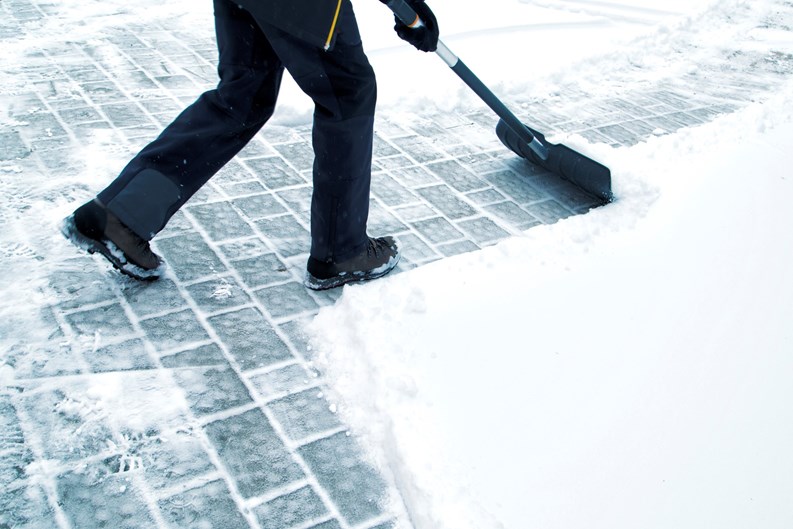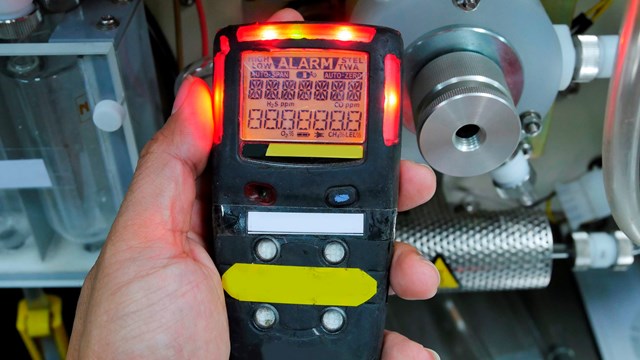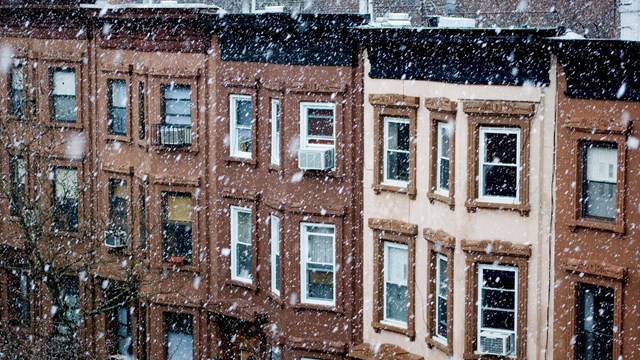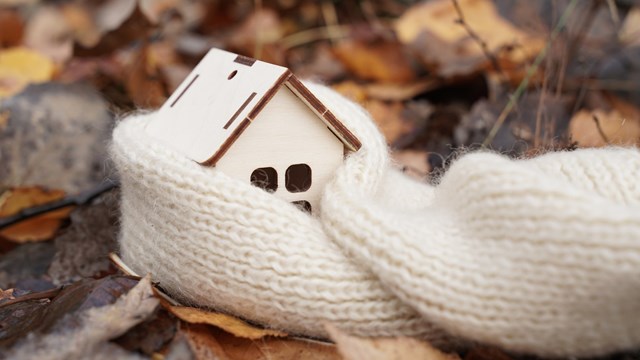Being a board member, manager, or maintenance staff member for a building or HOA obviously comes with numerous responsibilities. Chief among those is being ready and able to deal with risks, issues, and hazards that pose potential threats to the safety of the property, its inhabitants and visitors. This is especially true in the winter months, when snow and ice coat sidewalks, curbs and other structures that can alter the appearance of a building and cause costly wear-and-tear on structures, landscaping elements, and paved surfaces. Removing snow and ice in a thorough, timely manner is an administrative obligation that is absolutely non-negotiable. It’s also cost-effective; putting off or neglecting snow and ice control can lead to slip-and-fall injuries, and that means lawsuits. Even beyond that, depending on the jurisdiction in which your building sits, there may be numerous other expensive legal implications for not carrying out the task of snow and ice removal.
Snowledge Is Power
It’s extremely important for both associations and contractors to know what their responsibilities are when it comes to removing snow and ice on their properties and the properties they’re hired to maintain.
First, it’s crucial to know whether you could be held partly – or solely – responsible if precipitation and ice aren’t promptly and adequately addressed. Clear and well-defined roles are a great place to start. For example, whose task is it to physically go out and shovel snow, or sprinkle ice-melt on your building or association’s paved surfaces? The superintendent? The porter? A board member? How often should he or she venture out to re-shovel or re-sprinkle? Does this person know where the property lines are? Do they have adequate tools and equipment to get the job done right? Do they know how to use them properly?
Next, familiarize yourself with local laws concerning not only what exactly it is you are responsible for, but also the consequences for failure to meet those obligations. Even if you’ve been managing properties for decades, or have been on your board since the Carter administration, the fact is that laws can and do change. So before the first flakes fall, it’s worthwhile to refamiliarize yourself with your state and local ordinances and rules concerning snow removal and liability. Relatively snow-free states like Alabama, Hawaii, and South Carolina don’t have laws that govern the removal of snow, for obvious reasons – but numerous other states do, and they cover everything from where snow should be removed from, to how and when it should be removed.
Among the states that have to deal with annual snowfall, there’s a fair amount in common between them when it comes to the process of management and removal of that snow. While there definitely are variations among states – and even among municipalities – it can be said that the sidewalks, driveways, and other areas with regular foot traffic are common areas that usually fall under the responsibilities delegated to the association and their manager.
In addition, big cities such as New York, Boston, and Chicago handle the bulk of snow removal in public and state-run spaces, such as major roads, parks, and some sidewalks. According to Noah VanKooten, snow division manager for Chicago-based Christy Webber Landscapes, independent contractors in cooperation with property managers have their duties, too.
“This sounds pretty basic – and it is – but property managers are generally required to keep their properties free of snow and ice on all walking surfaces that isn’t a city street,” he says. “We are responsible generally for ‘creating a safe environment’ for all walking and driving surfaces at a given property, and then we basically become liable in a slip-and-fall if we can’t prove that we have performed all of our contracted duties. That doesn’t mean the area will never be slippery, or that a contractor or property manager is always at fault if someone slips – there are various parameters built into our contracts that we abide by.”
In more suburban areas, individual townships and municipalities will often make policies and regulations concerning snow removal, as well as how those regulations interlock with the policies and practices of private residential associations. So the options for associations, managers, and their staff could include a do-it-yourself approach, wherein individual residents shovel their own driveways and sidewalks (it should be noted that in many cases this type of approach poses its own risks; it’s estimated that at least 100 people die in the U.S. every year from cardiac-related injuries whilst shoveling snow); having building staff do the grunt-work, or hiring a snow removal service on an as-needed or retainer basis. The costs for the third option can be divvied among residents as part of their regular monthly condo fees, just like any other maintenance cost.
Municipal Efforts
While it is uncommon for private contractors and municipal snow removal teams to work together, it’s not entirely unheard of. If they do cooperate with each other, it’s usually because of a shared interest – such as when a main road runs right through a condo community, or a condo development abuts a public space like a park or municipal building. However, according to the snow pros, their interests and that of city crews are often at odds. For example, a contractor could come through early in the morning, fulfill their contractual obligations and be on their way, only to be contacted later and informed that the city plows came through later, and dumped where they plowed already. This happens often, and is sometimes complicated by the fact that some jurisdictions have fines for doing snow removal work outside the municipality’s set timetables.
Many of the locality-specific requirements can be found on municipal informational websites like www1.nyc.gov for New York City, or mass.gov, which offers statewide regulations for Massachusetts, as well as a city and town list where you can find specific bylaws and ordinances for your town. New regulations went into effect in 2015 for Chicago, according to cityofchicago.org — so even if you think you know your responsibilities for snow removal, it’s always a good idea to check in on a municipal website before receiving a potentially costly citation. Some more suburban townships also have noise ordinance laws in effect, which can make the time you have to clear the snow or ice after the fall ceases a very specific window.
Watch Your Wallet
The repercussions for failing to comply with local law about this potentially dangerous precipitation can be quite costly – but of course, the main concern is that they can also be profoundly dangerous. According to VanKooten, slip-and-fall accidents due to ice occur in great numbers every winter. Simply salting a walkway could mean the difference between an injury-free winter at your property, versus an accident that could result in hospitalization for a slip-and-fall victim as well as thousands or even millions of dollars spent on legal fees and damages – all of which which could’ve been prevented with $20 worth of ice-melt. It’s worth noting that this can vary between jurisdictions. “Laws have recently been changed to cap the amount of payouts on slip-and-fall claims in Illinois, so that has eased the burden on contractors a bit.” VanKooten adds.
It’s also important to remember that snow and ice are a threat to more than just bones and joints – both can cut deep into the money an association usually puts to the side for repairs. As it freezes, water expands in whatever space it finds itself in. When that space is a crack in a sidewalk or parking lot, ignoring the situation will eventually result in damage to the concrete or asphalt, and result in expensive, disruptive repairs.
Be Aware
Be smart about managing snow and ice as there is more to it than just plows and rock salt. Winter is a season that repeats on a yearly basis around a time we can predict. This means that we can effectively prepare for what’s to come. In general, it is safe to assume that all sidewalks, walkways, and driveways on and adjacent to the property fall under property management and association responsibility. Working a regulation check into your winter prep period can also help to inform your hiring of potential snow and ice removal contractors. Tom Canete, CEO/owner of Canete a company that offers snow removal services in Manhattan’s five boroughs as well as New Jersey and Westchester, advises that property managers have a sit-down meeting with potential contractors.
“You should ask about their storm action plan,” he says. “Make sure that yours is site specific; and make sure there’s more than one plan” in place for different amounts of snowfall and ice accumulation, because “no two storms are alike.” Canete also advises making sure the company you are interviewing has a good sense of how to handle these differences with multiple plans to put in effect, ranging from small accumulations to state of emergency, 100-year blizzards.
Michael Mulholland of the Montville, New Jersey-based landscaping company Advanced Land Management, agrees and adds that, “One of the mistakes building managers make is to micromanage the timing/decisions regarding [the] application of ice management products… Once guidelines are set, the contract managers should trust that we are operating in a way to keep the property safe while making good decisions on applications. Ice management solutions are time-sensitive. That’s why with HOA properties, we try to come up with an all-inclusive contract that covers the association for snow and ice management [for a] predetermined cap [that is] often never reached. This way, we can focus on doing the job the best way possible rather than covering ourselves with paper trails during a storm. This takes a lot of stress off HOA boards as well as property managers, as they know we will do whatever is needed to keep the property safe and accessible.”
The pros agree that boards and managers should start brainstorming towards the end of summer on how to prepare for getting rid of snow and ice. Making preparations early ensures that you can purchase enough supplies like salt, roof guards, roof melt, heated cables, and so forth to last through the duration of the season with little need to restock, as well as purchase or repair mechanical items like snowblowers.
Remember that while you do not have to handle things all on your own, snow removal contractors fill their client lists quite fast, especially in cities where snowfall is a given every winter. Waiting too long to lock in removal services can spell disaster for your property with no plan for incoming weather.
Lastly, be patient. You may be a paying customer, but you are not the only customer. Some contractors will work around the clock to make sure everyone on their client list gets taken care of – but it’s not easy. “I’ve always found it pretty interesting in that clients in Chicago never expect to be inconvenienced by snow,” says VanKooten, “whereas other more suburban or rural areas have a much more laid-back attitude about it. I don’t know how much the law differs, but folks in Chicago are far less forgiving about service lapses, and don’t really care if your guys have been working 30 hours straight or not. That, coupled with an extremely litigious mindset in a city, creates huge challenges and an intense working environment with snow removal.”
All in all, with proper prep, you can ensure that you, the inhabitants of the property you tend to and their visitors will enjoy holidays free of injury.
Oba Gathing is a freelance writer and regular contributor to The Cooperator.










Leave a Comment